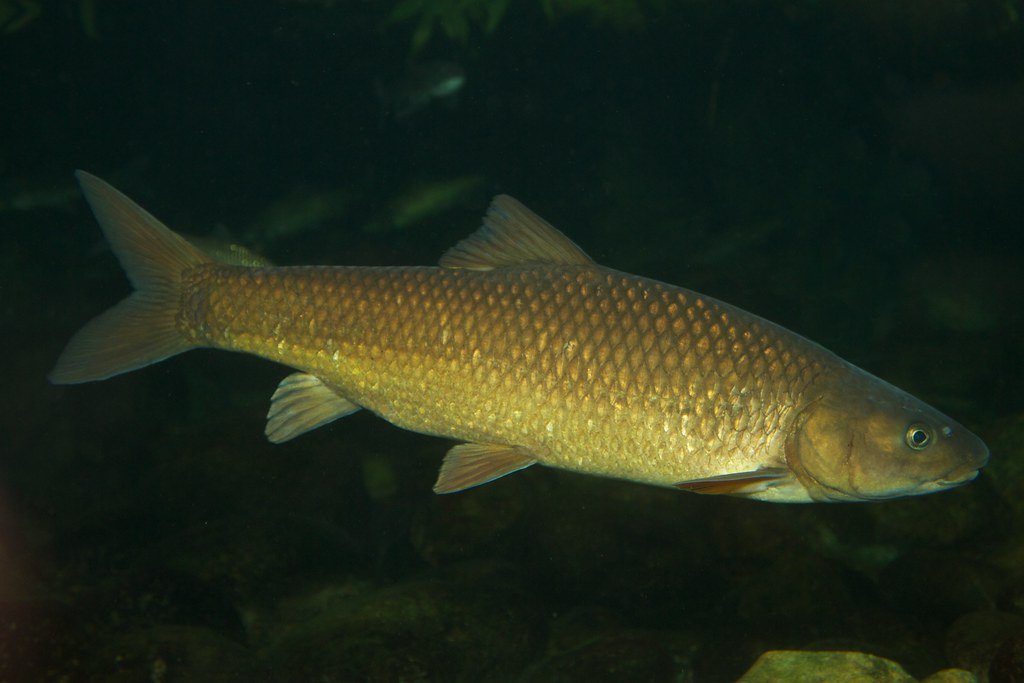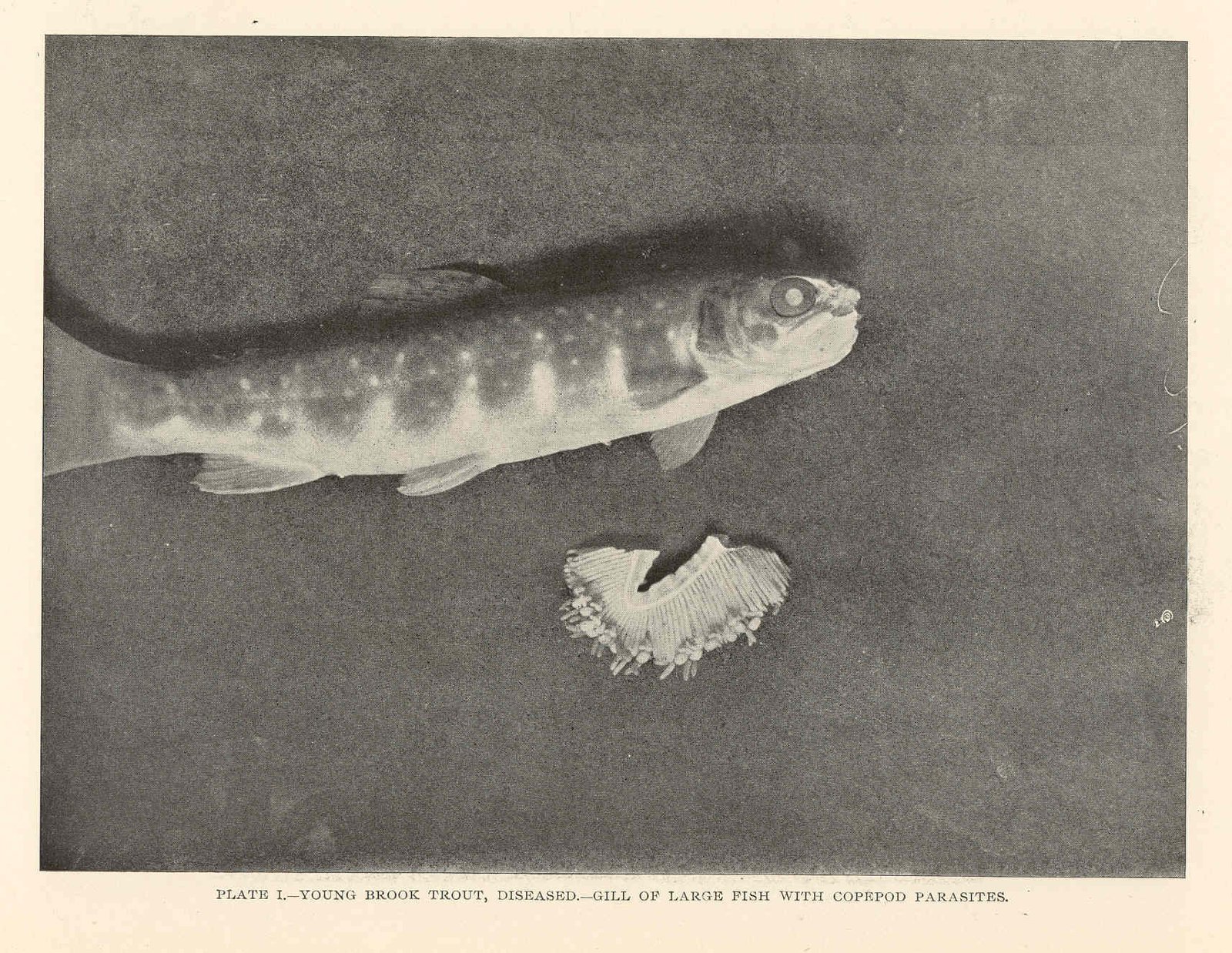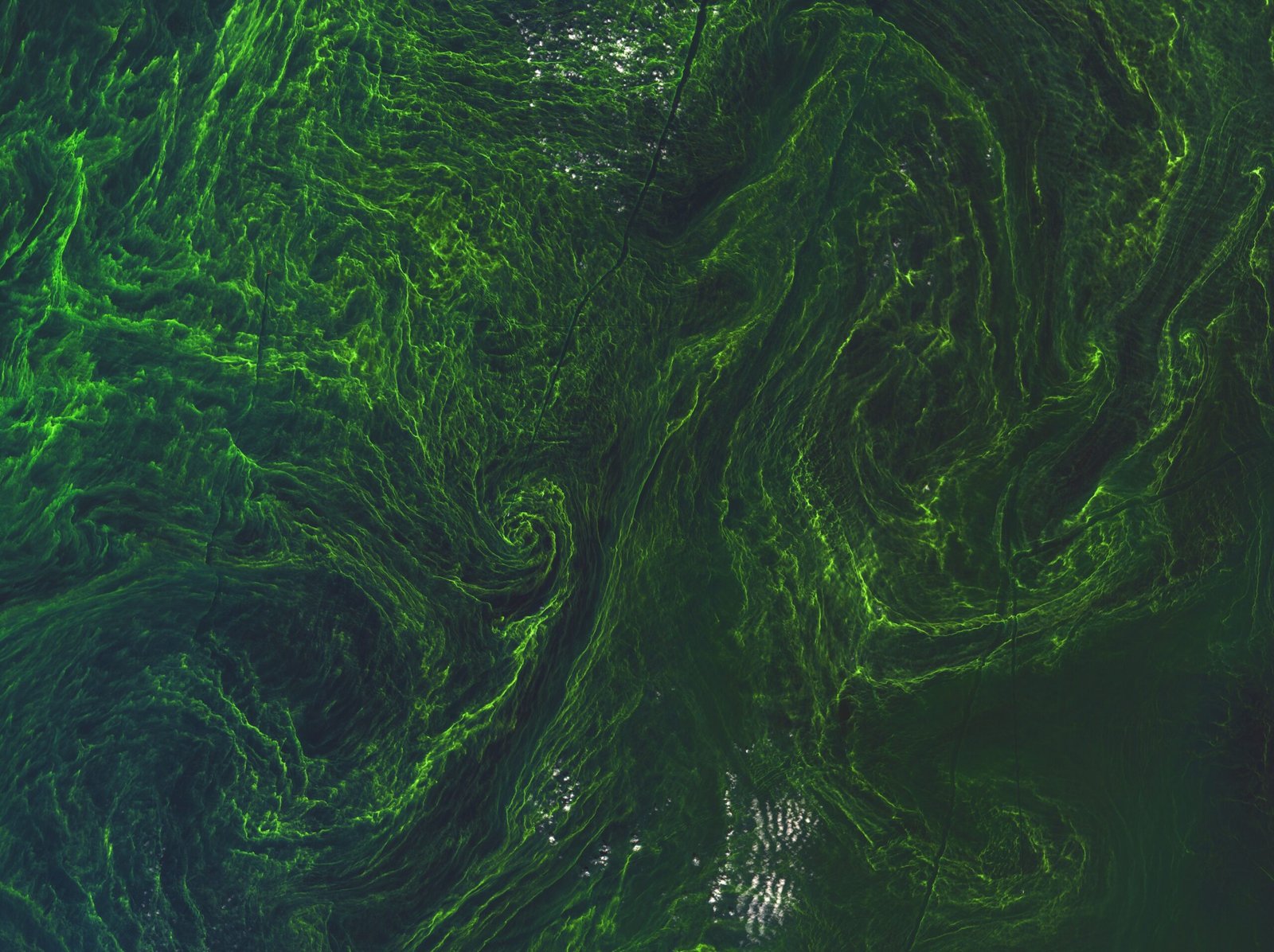Picture this: you’re standing beside a pristine pond, watching elegant koi glide through crystal-clear water, their vibrant colors shimmering in the sunlight. What you’re witnessing isn’t just beauty—it’s a testament to the invisible yet critical relationship between water quality and fish health. These ornamental carp, descendants of wild Asian carp, serve as living indicators of aquatic ecosystem health, revealing secrets that extend far beyond backyard ponds into rivers, lakes, and oceans worldwide. The quality of water doesn’t just affect how fish look; it determines whether they live or die, reproduce successfully, or suffer from debilitating diseases that can devastate entire populations.
The Invisible Foundation of Aquatic Life

Water quality forms the bedrock of all aquatic ecosystems, yet most people never consider what makes water truly suitable for fish survival. Unlike terrestrial animals that can escape poor air quality by moving to cleaner areas, fish are literally swimming in their life support system 24/7. Every breath they take, every molecule they absorb through their skin, comes directly from the water surrounding them.
The chemistry of water affects fish at the cellular level, influencing everything from oxygen uptake to waste elimination. Poor water quality creates a cascade of physiological stress that weakens immune systems, disrupts reproduction, and ultimately threatens survival. Think of it like humans trying to live in a house filled with toxic fumes—eventually, even the strongest individuals succumb to the constant assault on their health.
Oxygen Levels: The Breath of Life Underwater

Dissolved oxygen represents perhaps the most critical factor in fish health, yet it’s completely invisible to the naked eye. Koi and other fish extract oxygen from water through their gills, and when levels drop below optimal ranges, the effects are immediate and devastating. Fish gasping at the surface isn’t charming behavior—it’s a desperate attempt to find oxygen-rich water.
Temperature plays a crucial role in oxygen availability, with warmer water holding significantly less dissolved oxygen than cooler water. This creates a double-edged sword during summer months when fish metabolism increases due to higher temperatures, but the water’s capacity to hold oxygen decreases. Wild fish populations often experience massive die-offs during hot summer periods when oxygen levels plummet below survivable thresholds.
Pollution from agricultural runoff, sewage, and industrial waste creates oxygen-depleting conditions through a process called eutrophication. When excess nutrients enter waterways, they fuel explosive algae growth that consumes available oxygen, creating dead zones where fish cannot survive.
pH Balance: The Chemical Tightrope

The pH level of water—measuring its acidity or alkalinity—might seem like a minor detail, but for fish, it’s a matter of life and death. Koi thrive in slightly alkaline water with a pH between 7.0 and 8.5, while dramatic pH swings can cause severe stress or immediate mortality. Fish have evolved to function within specific pH ranges, and even small deviations can disrupt critical biological processes.
Acid rain, mining operations, and urban runoff can dramatically alter the pH of natural water bodies, creating conditions that are hostile to native fish species. When pH levels become too acidic, fish experience difficulty regulating their internal chemistry, leading to problems with gill function, reproduction, and overall health.
The buffer capacity of water—its ability to resist pH changes—depends on mineral content, particularly calcium and magnesium. Waters with low buffering capacity are more susceptible to rapid pH fluctuations, creating unstable environments that stress fish populations.
Temperature Fluctuations and Thermal Stress

Fish are cold-blooded creatures whose internal temperature matches their surrounding environment, making them incredibly sensitive to temperature changes. Sudden temperature shifts can shock fish into a state of physiological chaos, while gradual changes outside their comfort zone can weaken their immune systems and make them susceptible to disease.
Koi can tolerate a relatively wide temperature range, but rapid changes of just a few degrees can be fatal. Wild fish populations face increasing thermal stress from climate change, with warming waters pushing many species beyond their temperature tolerance limits. Cold-water fish like trout are particularly vulnerable, as rising temperatures reduce oxygen levels while simultaneously increasing their metabolic demands.
Human activities such as power plant cooling water discharge, urban heat island effects, and dam construction create thermal pollution that disrupts natural temperature patterns. These artificial temperature changes can prevent fish from completing essential life cycle activities like spawning, feeding, and migration.
Ammonia and Nitrogen Compounds: Silent Killers

Ammonia represents one of the most toxic substances fish can encounter, yet it’s naturally produced by fish themselves as a waste product. In healthy ecosystems, beneficial bacteria convert ammonia into less harmful compounds, but when this natural filtration system becomes overwhelmed, ammonia levels can quickly reach lethal concentrations.
The nitrogen cycle in aquatic environments depends on a delicate balance of bacteria that convert ammonia to nitrites, then to nitrates. Disruption of this cycle—through antibiotic pollution, pH changes, or temperature fluctuations—can create toxic conditions that kill fish within hours. Newly established ponds or aquariums are particularly vulnerable during the initial cycling period when beneficial bacteria populations haven’t yet developed.
Agricultural runoff containing high levels of nitrogen fertilizers feeds into waterways, creating conditions where ammonia spikes can occur naturally. Urban areas with inadequate sewage treatment also contribute to elevated ammonia levels in natural water bodies, threatening wild fish populations.
Heavy Metals and Industrial Contaminants

Industrial civilization has introduced countless chemical compounds into aquatic environments, many of which are highly toxic to fish even at extremely low concentrations. Heavy metals like lead, mercury, and cadmium accumulate in fish tissues over time, causing neurological damage, reproductive problems, and eventual death.
Mining operations, particularly copper and lead mining, have historically contaminated waterways with heavy metals that persist in sediments for decades. Even abandoned mine sites continue to leach toxic metals into groundwater and surface water, creating long-term threats to fish populations. The effects often aren’t immediately visible, but bioaccumulation means that older, larger fish carry higher concentrations of these toxins.
Koi in urban ponds often show signs of heavy metal exposure through unusual behavior patterns, reduced growth rates, and increased susceptibility to infections. Their relatively long lifespan makes them excellent indicators of chronic low-level contamination that might not immediately kill fish but gradually weakens their health over time.
Pesticides and Agricultural Runoff

Modern agriculture relies heavily on pesticides designed to kill insects, weeds, and other pests, but these chemicals don’t discriminate between target and non-target species. Fish, sharing evolutionary history with many pest species, are often highly susceptible to pesticide toxicity even at concentrations considered safe for human consumption.
Organophosphate and carbamate pesticides affect the nervous systems of fish, causing erratic swimming behavior, loss of coordination, and eventual paralysis. Herbicides can disrupt the aquatic food chain by killing plants that fish depend on for food and shelter. Even seemingly harmless compounds can have devastating effects when they interact with other chemicals in complex aquatic environments.
Seasonal patterns of pesticide use create predictable windows of high toxicity in agricultural watersheds. Spring planting and fall harvest periods often coincide with massive fish kills in farming regions, as rainfall carries concentrated pesticide loads into streams and rivers.
Chlorine and Water Treatment Chemicals

Municipal water treatment makes tap water safe for human consumption but creates an environment that’s immediately lethal to fish. Chlorine, used to kill bacteria in drinking water, destroys fish gill tissue on contact and disrupts their ability to extract oxygen from water. Even small amounts of chlorinated water can kill fish within minutes.
Water treatment facilities use various chemicals including chloramine, fluoride, and aluminum sulfate that serve important public health functions but are toxic to aquatic life. Chloramine, in particular, is more stable than chlorine and doesn’t dissipate as quickly, making it especially dangerous for fish. Unlike chlorine, which can be removed by aeration, chloramine requires specific chemical treatment to neutralize.
Storm water runoff from urban areas often carries chlorinated water from swimming pools, spas, and industrial facilities directly into natural waterways. This creates toxic zones where fish cannot survive, fragmenting aquatic habitats and disrupting migration patterns.
Dissolved Solids and Salinity Issues

The concentration of dissolved minerals in water affects fish health in ways that aren’t immediately obvious but can be devastating over time. Fish have evolved to function within specific salinity ranges, and changes to water chemistry can disrupt their ability to regulate internal fluid balance. Freshwater fish like koi can’t survive in saltwater, while marine fish quickly die in fresh water.
Road salt used during winter months creates seasonal salinity spikes in freshwater ecosystems, particularly in urban areas where storm drains carry concentrated brine directly into streams and ponds. These salt concentrations can persist well into spring, affecting fish reproduction and survival during critical spawning seasons.
Industrial activities and agricultural practices can alter water chemistry through the discharge of various dissolved compounds. Mining operations, in particular, can dramatically increase dissolved solid concentrations, creating conditions where fish cannot maintain proper cellular function.
Bacterial and Viral Pathogens

Water quality directly influences the prevalence and virulence of fish pathogens, with stressed fish being far more susceptible to bacterial and viral infections. Poor water conditions weaken fish immune systems while simultaneously creating environments where harmful microorganisms thrive. It’s a perfect storm that can devastate fish populations.
Organic pollution from sewage and agricultural waste provides nutrients for pathogenic bacteria, creating conditions where disease outbreaks can spread rapidly through fish populations. Warm, nutrient-rich water with low oxygen levels provides ideal breeding conditions for many fish pathogens that would otherwise remain at manageable levels.
Koi are particularly susceptible to bacterial infections like columnaris and aeromonas when water quality deteriorates. These opportunistic pathogens are often present in healthy environments but only become problematic when fish are stressed by poor water conditions. The same principle applies to wild fish populations facing environmental pressures.
Parasites and Water-Borne Threats

Parasitic infections in fish are closely tied to water quality, with many parasites requiring specific environmental conditions to complete their life cycles. Poor water quality creates stress that makes fish more vulnerable to parasitic infections, while also providing optimal conditions for parasite reproduction and transmission.
Ich, one of the most common fish parasites, thrives in warm water with poor circulation and high organic loads. The parasite can lie dormant in healthy environments but explodes into devastating outbreaks when water quality deteriorates. Fish weakened by poor water conditions cannot mount effective immune responses against parasitic infections.
Wild fish populations face additional parasitic pressures from habitat degradation and pollution. Contaminated sediments can harbor parasitic larvae, while changes to water chemistry can favor certain parasite species over others, disrupting the natural balance that keeps parasitic infections manageable.
Algae Blooms and Oxygen Depletion

Massive algae blooms represent one of the most visible signs of poor water quality, but their impact on fish health extends far beyond aesthetic concerns. These blooms consume enormous amounts of oxygen during nighttime hours when photosynthesis stops, creating conditions where fish literally suffocate in their own environment.
Toxic algae species produce compounds that are directly poisonous to fish, causing neurological damage, liver failure, and death. Blue-green algae blooms, in particular, release toxins that can kill fish within hours of exposure. These blooms are becoming increasingly common due to nutrient pollution from agricultural and urban sources.
The decomposition of algae blooms creates secondary problems as dead plant material consumes oxygen and releases hydrogen sulfide, ammonia, and other toxic compounds. Fish populations can experience multiple waves of mortality as the bloom lifecycle creates continuously changing but consistently dangerous conditions.
Microplastics and Emerging Contaminants

The modern world has introduced entirely new categories of pollutants that fish have never encountered in their evolutionary history. Microplastics, pharmaceutical compounds, and industrial chemicals now appear in virtually every aquatic environment on Earth, creating unprecedented challenges for fish health.
Microplastics can’t be broken down by fish digestive systems, leading to internal blockages, reduced feeding efficiency, and false feelings of satiation that can lead to malnutrition. These particles also absorb and concentrate other toxins, creating mobile poison delivery systems that fish inadvertently consume.
Pharmaceutical compounds from human and veterinary medicine enter waterways through sewage systems and agricultural runoff. Antibiotics can disrupt beneficial bacteria in fish digestive systems, while hormones can interfere with reproduction and development. These emerging contaminants often have subtle effects that aren’t immediately apparent but can have profound long-term consequences.
Seasonal Water Quality Variations

Natural seasonal cycles create predictable patterns of water quality changes that fish have evolved to handle, but human activities have amplified these variations beyond many species’ ability to adapt. Spring snowmelt carries accumulated pollutants from urban areas and agricultural fields directly into waterways, creating toxic pulses that can devastate fish populations.
Summer brings increased temperatures that reduce oxygen levels while simultaneously increasing fish metabolic demands. Drought conditions concentrate pollutants in reduced water volumes, while heavy rains create sudden dilution effects that can shock fish adapted to stable conditions. These extreme variations are becoming more common and more severe due to climate change.
Winter conditions create their own challenges as ice cover reduces gas exchange between water and atmosphere, leading to gradual oxygen depletion and carbon dioxide buildup. Fish populations that have been weakened by poor water quality during other seasons are particularly vulnerable to winter kill events.
Monitoring and Detection Methods

Understanding water quality requires sophisticated monitoring techniques that can detect problems before they become catastrophic for fish populations. Modern water testing equipment can measure dozens of parameters simultaneously, providing real-time data on conditions that affect fish health.
Biological indicators, including fish behavior and population health metrics, often provide early warning signs of water quality problems before chemical tests reveal issues. Experienced fish keepers learn to recognize subtle changes in fish behavior that indicate developing problems, while wildlife biologists use fish population surveys to assess ecosystem health.
Automated monitoring systems can track water quality parameters continuously, alerting managers to dangerous conditions before fish populations are affected. These systems are becoming increasingly important as environmental pressures on aquatic ecosystems continue to intensify.
Conservation and Restoration Efforts

Protecting and restoring water quality for fish health requires comprehensive approaches that address pollution sources, habitat restoration, and ecosystem management. Successful conservation efforts often focus on watershed-scale management that considers all factors affecting water quality from source to sea.
Restoration projects have demonstrated that degraded aquatic environments can recover when pollution sources are controlled and natural processes are allowed to resume. Constructed wetlands, riparian buffers, and other green infrastructure can significantly improve water quality while providing additional benefits for wildlife and human communities.
Community engagement and education play crucial roles in water quality protection, as individual actions collectively have enormous impacts on aquatic ecosystems. Simple changes in fertilizer use, vehicle maintenance, and waste disposal can dramatically improve local water quality and fish health.
The Broader Implications for Ecosystem Health

Fish serve as indicator species for overall ecosystem health, with their wellbeing reflecting the condition of entire aquatic environments. When water quality supports healthy fish populations, it typically indicates that the ecosystem can support diverse communities of plants, invertebrates, and other wildlife.
The interconnectedness of aquatic ecosystems means that problems affecting fish health often have cascading effects throughout the food web. Declining fish populations can affect bird species that depend on fish for food, while changes in fish behavior can alter nutrient cycling and plant communities in aquatic environments.
Understanding these connections helps us appreciate why protecting water quality for fish health ultimately benefits entire ecosystems and the human communities that depend on them. Clean water isn’t just about fish—it’s about maintaining the complex web of life that supports all aquatic species.
Future Challenges and Opportunities

Climate change, population growth, and industrial development will continue to create new challenges for maintaining water quality and fish health. Rising temperatures, changing precipitation patterns, and increased pollution loads will test the resilience of aquatic ecosystems worldwide.
However, advancing technology and growing environmental awareness offer opportunities to address these challenges more effectively than ever before. Improved monitoring systems, better treatment technologies, and innovative conservation approaches provide tools for protecting and restoring aquatic environments.
The future of fish health depends on our collective commitment to understanding and addressing the complex factors that affect water quality. By recognizing the vital connection between water quality and fish health, we can work toward ensuring that future generations inherit healthy aquatic ecosystems capable of supporting diverse and thriving fish populations.
Every decision we make about water use, pollution prevention, and ecosystem management affects the delicate balance that sustains aquatic life. The health of a single koi in a backyard pond reflects the same fundamental principles that govern the survival of wild fish populations worldwide, reminding us that water quality isn’t just a technical issue—it’s a matter of life and death for countless aquatic species. What will you do to protect the waters that sustain life in your community?




